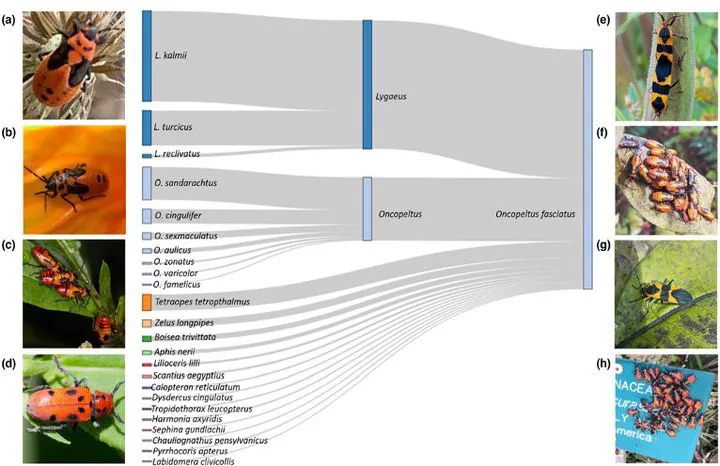Citizen science data reveal regional heterogeneity in phenological response to climate in the large milkweed bug, Oncopeltus fasciatus
Jan 7, 2023·,,,,,,·
0 min read
Alexis Garretson
Cuddy
T.
Duffy
A.
Forkner
R.

Abstract
Regional populations of geographically widespread species may respond to different environmental factors across the species’ range, generating divergent effects of climate change on life-history phenology. Using thousands of citizen science observations extracted from iNaturalist and associated with corresponding temperature, precipitation, elevation, and daylength information, we examined the drivers of adult mating and of nymphal phenology, development, and group size for populations of the large milkweed bug, Oncopeltus fasciatus, in different ecoregions. Research-grade iNaturalist images were correctly identified 98.3% of the time and yielded more than 3000 observations of nymphal groups and 1000 observations of mating adults spanning 18 years. Mating phenology showed distinct regional patterns, ranging from year-round mating in California to temporally restricted mating in the Great Lakes Northeastern Coast ecoregion. Relative temperature increases of 1°C for a given daylength expanded the mating season by more than a week in western ecoregions. While increases in relative temperature delayed mating phenology in all ecoregions, greater winter precipitation advanced mating in the California ecoregion. In the eastern ecoregions, nymphal phenology was delayed by increases in summer rainfall but was advanced by relative temperature increases, whereas in western regions, relative temperature increases delayed nymphal phenology. Furthermore, accumulated growing degree days (AGDD) was a poor predictor of developmental progression, as we found a positive but weak correlation between AGDD and age structure only for the Appalachian Southeast North America and the Great Lakes Northern Coast ecoregions. These complex phenological responses of O. fasciatus are just one example of how populations may be differentially susceptible to a diversity of climatic effects; using data across a species’ whole distribution is critical for exposing regional variations, especially for species with large, continental-scale ranges. This study demonstrates the potential of photodocumented biodiversity data to aid in the monitoring of life history, host plant–insect interactions, and climate responsiveness.
Type
Publication
Ecology and Evolution